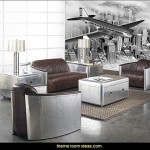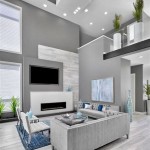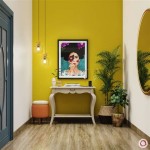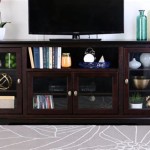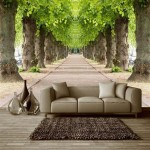Playroom Decorating Ideas: Creating a Fun and Functional Space
A playroom is a vital space for children to explore their creativity, imagination, and physical abilities. It serves as a haven for playtime, learning, and development. When designing a playroom, it is crucial to consider both functionality and aesthetics. A well-designed playroom provides a stimulating environment that encourages children's growth and development while offering a safe and organized space for play. This article will explore some playroom decorating ideas that can transform a room into a vibrant and inviting haven for children of all ages.
Creating a Theme
A common approach to playroom decorating is to choose a theme. Themes can range from popular cartoons and characters to specific hobbies or interests. For example, a sports-themed playroom could feature a basketball hoop, a soccer net, and sports-related wall art. A fairy-tale themed playroom might include a princess castle, a playhouse, and fairy lights. Choosing a theme can create a cohesive and visually appealing space that provides a focal point for play and imagination.
When selecting a theme, it is essential to consider the child's interests and preferences. A theme that resonates with the child will encourage them to spend more time in the playroom and engage in imaginative play. Additionally, the theme should be flexible enough to adapt to the child's evolving interests. For example, a playroom initially themed around a specific cartoon character could later evolve into a more generic "fantasy" or "adventure" theme.
Choosing the Right Furniture
The furniture in a playroom should be both functional and comfortable. Consider the age and developmental stage of the child when selecting furniture pieces. For younger children, a play mat or soft rug can provide a safe and comfortable space for crawling and playing. For older children, consider adding a play table, a bookshelf, and storage bins for toys and games.
When choosing furniture, it is essential to prioritize durability and safety. Look for sturdy furniture made from materials that can withstand heavy use. Choose furniture with rounded edges and corners to minimize the risk of injuries. Additionally, consider incorporating furniture with built-in storage, such as ottomans with storage compartments or benches with drawers. This can help keep the playroom organized and clutter-free.
Adding Light and Color
Light and color play a crucial role in creating a stimulating and inviting playroom environment. Natural light is ideal, so ensure the playroom has adequate windows. If natural light is limited, consider using artificial lighting to create bright and cheerful ambiance. Utilize a combination of overhead lighting and task lighting, such as lamps or desk lamps, to provide adequate illumination for different play activities.
When selecting colors for the playroom, consider the child's age and preferences. Bright and vibrant colors can stimulate creativity and imagination, while softer shades can create a calming and serene atmosphere. Incorporate a variety of colors to add visual interest and create a playful atmosphere. Utilize accent walls, colorful rugs, and colorful furniture to add pops of color to the playroom. Remember, the goal is to create a space that is both stimulating and inviting for children.
Creating Storage Solutions
A well-organized playroom is essential for promoting a sense of order and encouraging children to clean up after themselves. Consider using a combination of open and closed storage solutions to keep toys and games organized. Open storage solutions, such as shelves and bins, allow children to easily access their toys, while closed storage solutions, such as drawers and cabinets, can be used to store items that are less frequently used.
Labeling storage containers can make it easier for children to put away their toys and games. Incorporate colorful labels or pictures to make the labeling process more engaging for children. Encourage children to participate in organizing their belongings and putting away their toys. This can help them develop a sense of responsibility and ownership over their playroom.
Adding Personal Touches
Personal touches can add a sense of warmth and individuality to the playroom. Consider adding a personal touch by displaying artwork created by the child, photos of family and friends, or favorite toys and memorabilia. This can help create a space that feels unique and special to the child.
Consider adding some decorative elements that reflect the child's hobbies and interests. For example, a child who loves music might enjoy having a music corner with a small music stand, instruments, and colorful wall decals featuring musical themes. A child interested in sports might prefer a sports-themed corner with shelves for displaying trophies and sports equipment.
Safety First
Safety is paramount in any playroom. Ensure that all furniture and play equipment are sturdy and free of sharp edges or corners. Use non-toxic paints and finishes on all surfaces. Install childproof locks on cabinets and drawers. Monitor the playroom for any potential hazards and address them promptly.
Consider installing safety gates at the entrance to the playroom if necessary. This helps prevent younger children from wandering into the playroom unsupervised. Additionally, be sure to provide adequate lighting in the playroom to prevent accidents. Remember, a safe and secure playroom is essential for creating a fun and engaging environment for children.

Fun Functional Playroom Decorating Ideas

21 Fun Kids Playroom Toy Room Ideas Extra Space Storage

Playroom Ideas 25 Fun Yet Stylish Designs Kids Will Love

Beautiful Toddler Playroom Organization And Diy Decor Ideas

45 Small Space Kids Playroom Design Ideas

30 Kids Playroom Ideas To Spark Creativity Small Tips

40 Imaginative Playroom Ideas Fun Decorating Tips

Stylish Playroom Design Ideas Forbes Home

Playroom Ideas Trends 2025 Bright And Beautiful Checkatrade

Basement Kids Playroom Ideas And Design Tips
